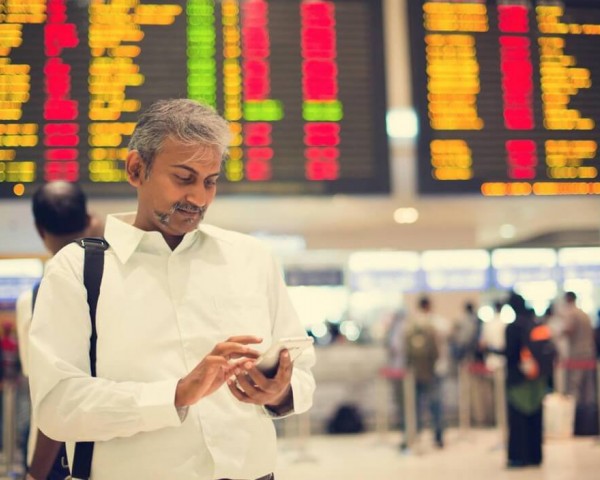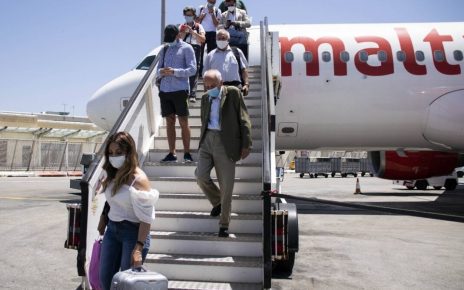The latest data indicates that domestic travel in India is experiencing strong growth potential, having already surpassed 100% of pre-pandemic levels, with international travel quickly catching up. Significant investments are supporting the growth of the Indian travel marketplace. According to the United Nations, India, with a population of over 1.4 billion, has recently overtaken China as the world’s most populated country. In addition, the World Travel and Tourism Council’s Economic Impact Research predicts that India will soon overtake Germany to become the world’s third-biggest travel and tourism country. With recent significant aviation developments in India, Sabre has analyzed data to examine India’s travel growth potential in the upcoming years.
Their key findings include:
- It is expected that tourism will receive significant investments, which will result in an increased demand for domestic and international travel, thus requiring more airline capacity.
- By March 2023, domestic travel has regained popularity and capacity has exceeded pre-pandemic levels. Bookings for domestic travel are now at 100% of pre-pandemic levels, while foreign travel bookings have reached approximately the pre-pandemic numbers.
- It is expected that Indian airlines will significantly impact worldwide travel.
- Despite the expensive cost of international flights, there is an increase in the number of passengers.
- As travel becomes more accessible, India’s middle class is expected to double from one in three to two in three Indians by 2047, giving the Indian population more opportunities to travel.
The Indian tourism sector is expected to receive significant investments to improve domestic and international travel capacity.
Indian airlines, including Air India, Akasa Air, and IndiGo, are expected to acquire up to 1,200 new aircraft within the next 24 months to meet the growing travel demand. In addition, several initiatives to support future tourist industry growth were also announced in the Union Budget of India 2023, delivered in February of this year.
A $12 billion investment was made in aviation infrastructure improvements to support capacity increases, with plans to build 220 airports. Under the “Revival of Unserved and Under-served Airports” program, India is also renovating and upgrading close to 100 airports to increase capacity, particularly for domestic travel, while lowering air travel costs. In addition, in India, the number of aviation schools by 2025 will be increased to help meet the growing demand for pilots.
Bookings for international travel are almost at pre-pandemic levels. The domestic capacity has already surpassed pre-pandemic levels.
According to the booking data, domestic travel increased by 98.8% in January 2023 to 11 million trips from 11.2 million in January 2019. Furthermore, domestic travel peaked in March at 107.4 percent, surpassing pre-pandemic levels, which were 99.3 percent in February. In fact, since the year’s beginning, domestic capacity has already surpassed 2019 levels, indicating the possibility of a significant increase in domestic travel.
More travelers in India switched to domestic travel during the pandemic when they couldn’t travel abroad. The significant expansion in domestic travel and capacity could also be attributed to the government’s investment in enhancing connectivity.
Additionally, low-cost carriers have become more prevalent recently in India, and they have seen an increase in domestic travel. For the first three months of 2023, domestic low-cost airlines’ capacity represented 110 percent of 2019 levels. While in the first quarter of 2019, 23.2 million passengers were traveling domestically by low-cost airlines, during the same period in 2023, the number climbed to 26.5 million.
Most Indian airlines focus on providing affordable flights within the country. Currently, Indian Airlines cover 42.7% of all international routes, a 36% increase from before the pandemic.
The aviation ministry has recently requested local carriers, mainly Indian ones, to operate on longer routes, which could further expand international routes for Indian airlines.
International fares have increased post-pandemic
Travel has significantly rebounded despite a 41.3 percent increase in international airfare prices as of February 2023 compared to pre-pandemic rates. Due to the extended lockdowns and limited capacity to accommodate the pent-up demand, many people are engaging in what’s known as “revenge travel.” This trend is where individuals make up for lost time by traveling extensively.
As of February 2023, domestic airfares were 24.5 percent more expensive than before the outbreak. However, as the capacity increases to meet the growing demand, and with various tourism initiatives aimed at making travel more accessible for India’s expanding middle class, fare rates are expected to stabilize.




